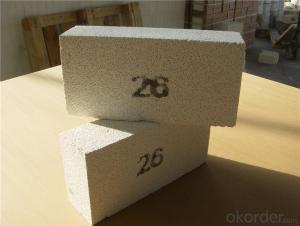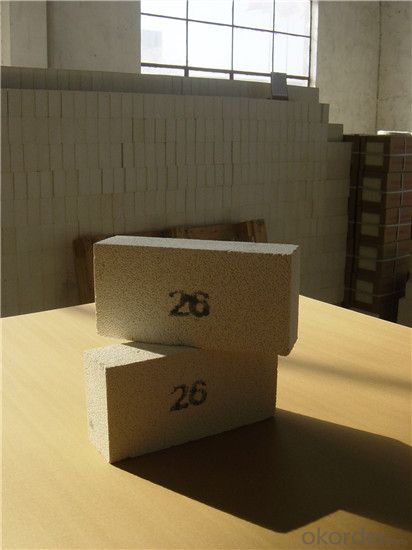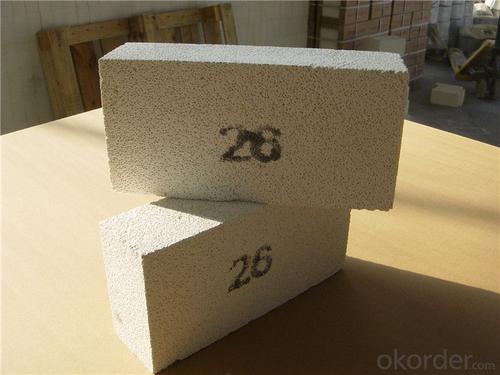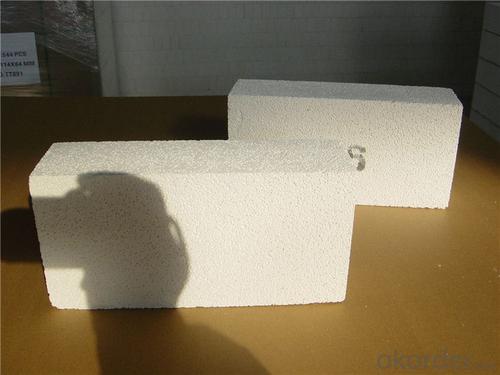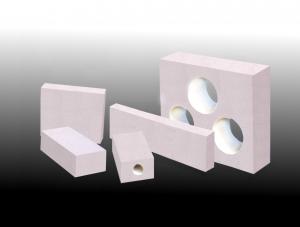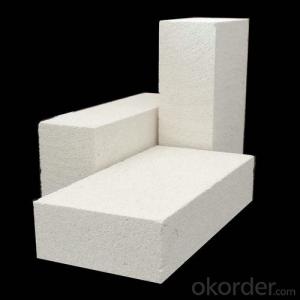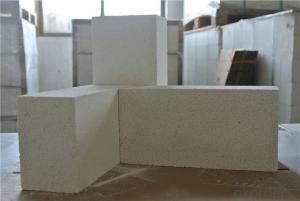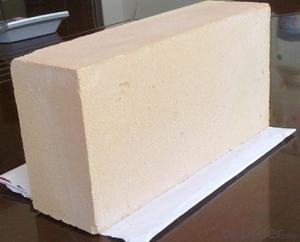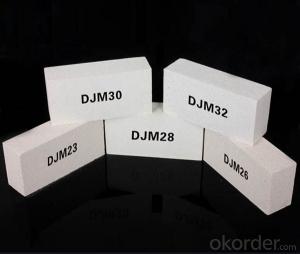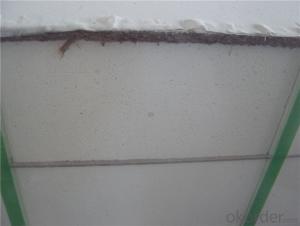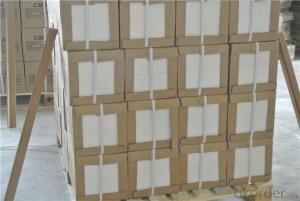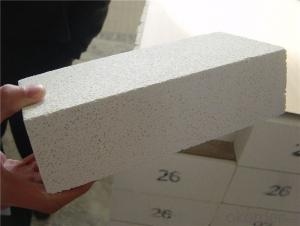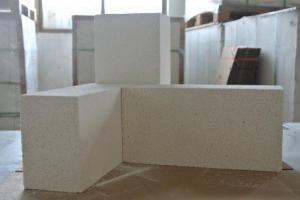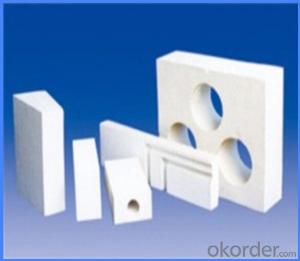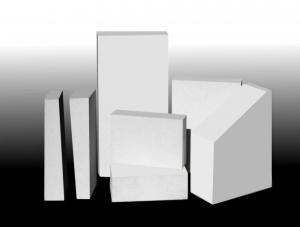Insulating Fire Brick - Fire Insulation Brick Fire Clay Bricks for Furnace
- Loading Port:
- Shanghai
- Payment Terms:
- TT OR LC
- Min Order Qty:
- 1 m.t.
- Supply Capability:
- 1000 m.t./month
OKorder Service Pledge
OKorder Financial Service
You Might Also Like
Thermal Insulation Fire Clay Brick
Refractory brick is a block of refractory ceramic material used in lining furnaces, kilns, fireboxes, and fireplaces.
We provide high quality Refractory Fire Bricks that are used on wide range in the various industries like Cement, Glass and Steel. Refractory Fire Bricks are provided as per the quantity and specifications required by the customers. We provide an extensive range of Refractory Fire Bricks at reasonable prices that depend upon the quantity ordered.
Application
Insulating Fire Brick are used for the lining of converter, alternating current arc furnace, direct Current arc furnace and the ladle slag line, etc.
Company Advantage
(1)Long Insulating Fire Brick manufacture history: 25 years manufacturer
(2)Advanced equipment
(3)Diversification of production standards: ISO ANSI FEPA JIS ASTM
(4)Flexible payment: T/T L/C D/P D/A
(5)Professional marketing team and after-sale service
Insulating Fire Brick main feature:
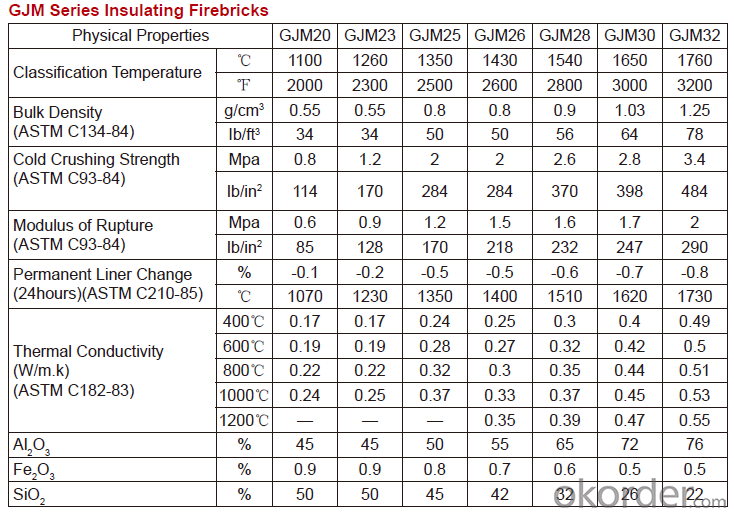
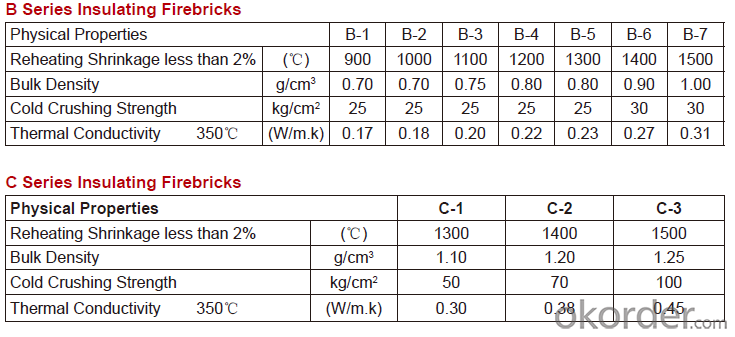
Equipment
1 unit of Ceramic Abrasive (SG Abrasive) pilot production line
2 units of Compact grain Abrasive pilot production lines
1 unit of high-end coated abrasives (abrasive cloth) production line
2 units of Boron Carbide production lines
3 large flexible crushing and sieving lines for grit production lines
6 units of 5000KVA-10000KVA dumping type electric arc furnaces for Brown Fused Alumina fusion
Q1 What’s the transport method?
A1 FCL delivery goods with wooden pallet or wooden case by sea; If LCL delivery, must with wooden case; Sometimes need open top, flat rack or bulk cargo.
Q2 What’s the required payment term?
A2 Generally 30% TT as the prepayment, 70% TT before delivery. If need, 100% Irrevocable Letter of Credit or negotiation.
Q3 Which country are our products exported to?
A3 Apart from entire Chinese market, the US, Russia, Japan, Korea, Australia and some Southeast Asian Nations.
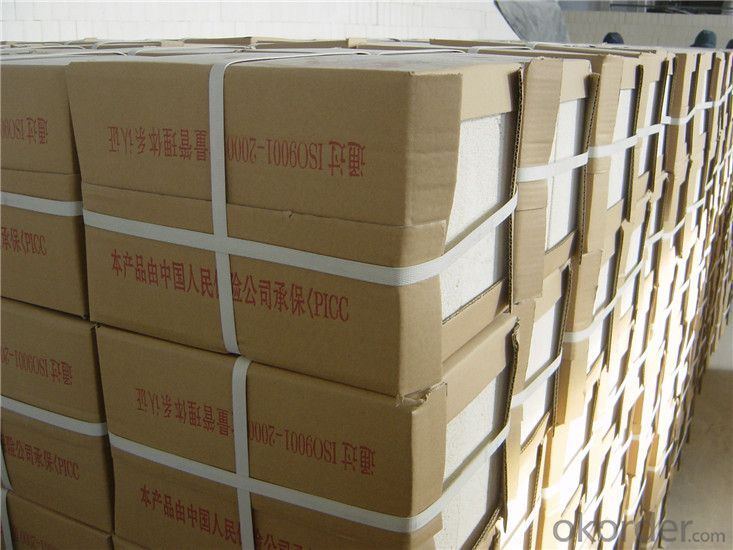

- Q: What is the typical modulus of rupture of an insulating fire brick?
- The modulus of rupture of an insulating fire brick can differ based on the brick's particular composition and manufacturing method. On average, insulating fire bricks usually have a modulus of rupture ranging from 1 to 10 megapascals (MPa). This indicates that these bricks can endure a bending force or pressure of 1 to 10 MPa before they fracture or break. It should be emphasized that the modulus of rupture can be affected by factors like the density, porosity, and chemical composition of the insulating fire brick.
- Q: What are the new types of building brick materials?
- Sintered silt insulation brick, steam block, light building block, hollow clay brick, etc..
- Q: Can insulating fire bricks be installed in both industrial and residential settings?
- Yes, insulating fire bricks can be installed in both industrial and residential settings. These bricks are designed to withstand high temperatures and provide excellent insulation, making them suitable for applications in furnaces, kilns, fireplaces, and other heating systems found in both industrial and residential environments.
- Q: Can insulating fire bricks withstand thermal shock?
- Insulating fire bricks are designed to have high thermal insulation properties and are typically used in applications where thermal shock is not a major concern. While insulating fire bricks can withstand moderate temperature changes, they are not specifically engineered to resist thermal shock. Thermal shock occurs when there is a rapid change in temperature, causing stress and potential damage to the material. Insulating fire bricks are more susceptible to thermal shock compared to dense fire bricks, which are specifically designed to withstand extreme temperature changes. If thermal shock is a concern in your application, it is recommended to consider other types of refractory materials that are specifically designed to withstand rapid temperature changes.
- Q: Can insulating fire bricks be used in the construction of reheat furnaces?
- Indeed, reheat furnaces can utilize insulating fire bricks in their construction. These bricks possess the capability to endure elevated temperatures and offer exceptional insulation, rendering them exceptionally suitable for furnaces. With their low thermal conductivity, insulating fire bricks aid in diminishing heat loss and enhancing energy efficiency within the furnace. Moreover, they exhibit remarkable resistance to thermal shock, enabling them to withstand swift temperature fluctuations encountered during the reheat procedure. All in all, insulating fire bricks emerge as a fitting option for reheat furnace construction, as they foster improved heat retention and energy conservation.
- Q: How do insulating fire bricks help reduce emissions from heating equipment?
- Insulating fire bricks help reduce emissions from heating equipment by providing better insulation, which improves the efficiency of the heating process. This means that less fuel is required to generate the desired heat, resulting in reduced emissions of greenhouse gases and pollutants. Additionally, the insulation helps to maintain higher temperatures within the equipment, promoting more complete combustion and further minimizing emissions.
- Q: Several kinds of energy-saving bricks
- It can be said that the type of brick is the kind of energy-saving brick. Coal gangue sintered brick (known as red brick), porous brick, hollow brick, aerated concrete block brick, etc..
- Q: Is it possible to recycle used insulating fire bricks?
- It is indeed feasible to recycle insulating fire bricks that have been used. Insulating fire bricks consist of a range of materials, including alumina, silica, and other refractory materials. These materials can be dismantled and utilized again in the creation of fresh bricks or alternative refractory products. The recycling of used insulating fire bricks aids in the reduction of the need for fresh raw materials and the mitigation of waste. Nevertheless, it is crucial to acknowledge that not all recycling centers or facilities may accept insulating fire bricks. It is therefore advisable to verify with local recycling programs or specialized recycling companies that handle refractory materials.
- Q: Can insulating fire bricks be used in a refractory lining?
- Yes, insulating fire bricks can be used in a refractory lining. Insulating fire bricks are specifically designed to provide thermal insulation and reduce heat loss in high-temperature applications. They have low thermal conductivity and high insulating properties, making them ideal for use in refractory linings. These bricks can help improve the energy efficiency of furnaces, kilns, and other industrial applications by reducing heat transfer to the surrounding environment. Additionally, insulating fire bricks are lightweight, easy to install, and have good strength and durability, making them a popular choice for refractory linings.
- Q: Can insulating fire bricks be used as a thermal barrier?
- Yes, insulating fire bricks can be used as a thermal barrier. These bricks have high thermal resistance and low thermal conductivity, making them effective in reducing heat transfer. They are commonly used in applications where thermal insulation is required, such as in furnaces, kilns, and fireplaces, to prevent heat loss and protect surrounding areas from excessive heat.
Send your message to us
Insulating Fire Brick - Fire Insulation Brick Fire Clay Bricks for Furnace
- Loading Port:
- Shanghai
- Payment Terms:
- TT OR LC
- Min Order Qty:
- 1 m.t.
- Supply Capability:
- 1000 m.t./month
OKorder Service Pledge
OKorder Financial Service
Similar products
Hot products
Hot Searches
Related keywords

